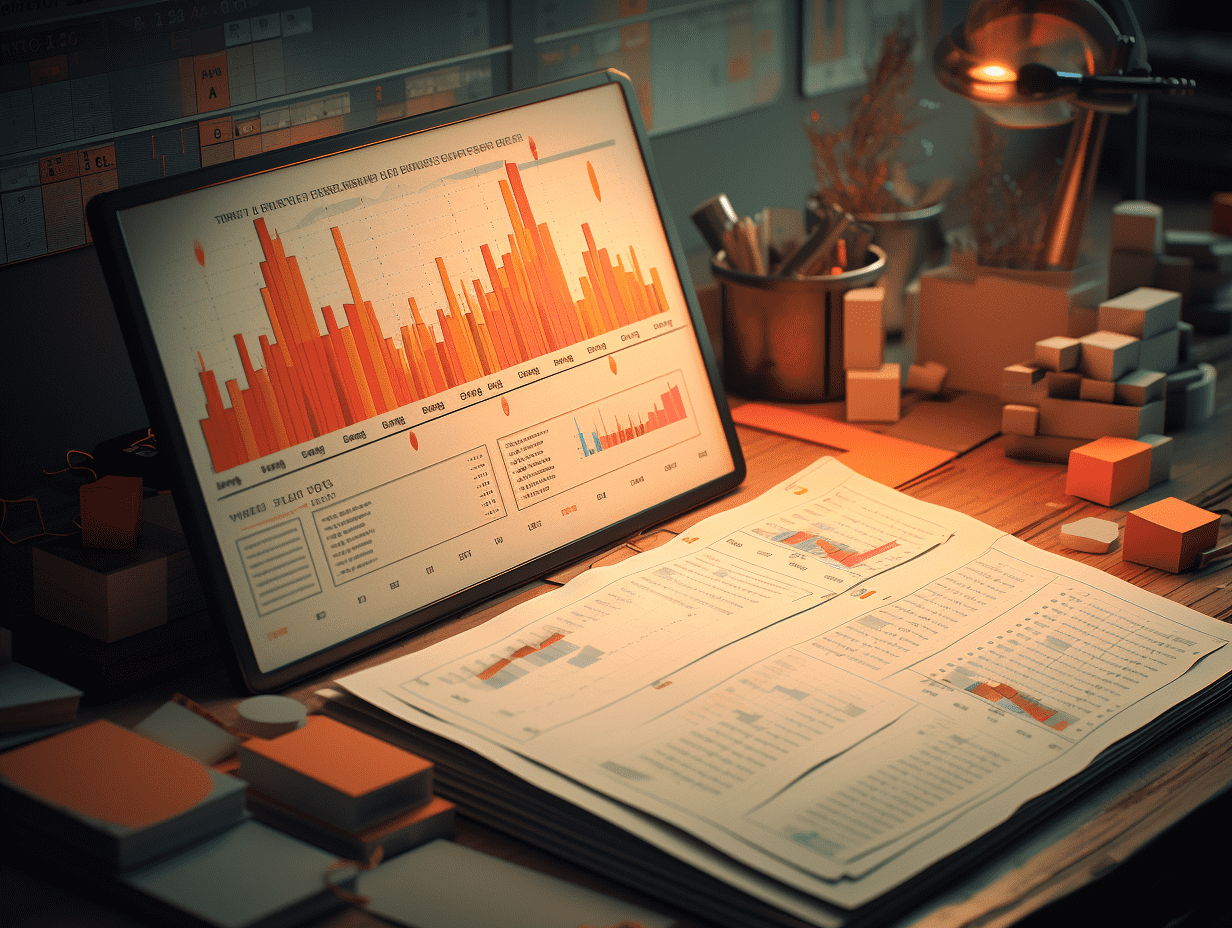Overnight US stocks | The Nasdaq has fallen for five consecutive trading days, and the yield on the 30-year U.S. Treasury bond has returned above 5%.
As of the close, the Dow rose 221.16 points, or 0.52%, to 42,518.28; the Nasdaq fell 43.71 points, or 0.23%, to 19,044.39; the S&P 500 rose 6.69 points, or 0.11%, to 5,842.91.
On Tuesday, the three major indexes showed mixed movements, with the Nasdaq falling for the fifth consecutive trading day. Although the December PPI in the United States was lower than expected, inflation concerns still loomed over the market, with the 30-year Treasury yield hitting a near-term high above 5% on Tuesday. The 30-year yield rose above 5% for the second time since last Friday, while the 10-year yield climbed to 4.81%, both reaching their highest levels since November 2023. The market's concern about persistent inflation possibly prompting the Federal Reserve to stop cutting interest rates has led to a continuous rise in Treasury yields in recent weeks, with short-term yields recovering after the release of the PPI data and remaining essentially flat from the previous day.
[US Stocks] At the close, the Dow rose 221.16 points, or 0.52%, to 42,518.28 points; the Nasdaq fell 43.71 points, or 0.23%, to 19,044.39 points; the S&P 500 rose 6.69 points, or 0.11%, to 5,842.91 points. Tesla, Inc. (TSLA.US) and NVIDIA Corporation (NVDA.US) both fell by more than 1%, while Meta Platforms (META.US) fell 2.3%. The Nasdaq Golden Dragon Index rose 2.1%, XPeng, Inc. ADR Sponsored Class A (XPEV.US) rose nearly 7%, Alibaba Group Holding Limited Sponsored ADR (BABA.US) rose by over 1%, and JD.com, Inc. Sponsored ADR Class A (JD.US) rose 4%.
[European Stocks] The German DAX30 index rose 138.50 points, or 0.69%, to 20,275.72 points; the UK FTSE 100 index fell 23.71 points, or 0.29%, to 8,200.48 points; the French CAC40 index rose 15.03 points, or 0.20%, to 7,423.67 points; the Euro Stoxx 50 index rose 26.64 points, or 0.54%, to 4,980.85 points; the Spanish IBEX35 index rose 60.55 points, or 0.52%, to 11,748.75 points; and the Italian FTSE MIB index rose 320.73 points, or 0.92%, to 35,120.00 points.
[Asia-Pacific Stock Markets] The Nikkei 225 index fell more than 1.8%, the Jakarta Composite Index in Indonesia fell 0.86%, and the KOSPI index in South Korea rose 0.31%.
[Cryptocurrency] Bitcoin rose more than 2% to $96,470.65, and Ethereum rose more than 2.6% to $3,220.
[Gold] Spot gold rose 0.52% to $2,676.98 per ounce; COMEX gold futures rose 0.51% to $2,692.20 per ounce.
[Oil] The Brent crude oil futures for March delivery on the European Intercontinental Exchange, Inc. fell $1.09, or 1.35%, to close at $79.92 per barrel; the WTI crude oil futures for February delivery on the New York Mercantile Exchange fell $1.32, or 1.67%, to close at $77.50 per barrel. The U.S. government's first forecast for the oil market next year is that with OPEC restoring production and continued growth in production from the United States, Canada, and Guyana, the global oil market will face a more serious oversupply situation in 2026. The EIA stated on Tuesday that it expects the global oil market to average an excess of 800,000 barrels per day in 2026, more than double the 300,000 barrels per day excess forecast for this year. In its report last month, the EIA had predicted a slight supply shortfall this year. The EIA expects oil production from OPEC member countries and non-OPEC oil-producing countries to continue growing over the next two years, while oil consumption in OECD countries is expected to slightly decrease in 2026.
[Foreign Exchange] The U.S. dollar index, which measures the dollar against six major currencies, fell 0.61% to close at 109.280 in the foreign exchange market. At the close of the New York exchange, 1 euro was exchanged for $1.0298, up from $1.0208 the previous trading day; 1 pound was exchanged for $1.2200, up from $1.2167 the previous trading day. 1 dollar was exchanged for 157.94 yen, up from 157.81 yen the previous trading day; 1 dollar was exchanged for 0.9127 Swiss francs, down from 0.9191 Swiss francs the previous trading day; 1 dollar was exchanged for 1.4365 Canadian dollars, down from 1.4412 Canadian dollars the previous trading day; 1 dollar was exchanged for 11.1796 Swedish kronor, down from 11.2895 Swedish kronor the previous trading day.
[Macro News]
The U.S. December PPI data rose only slightly, with the increase below expectations. The U.S. December PPI data rose modestly, but this is unlikely to change the Federal Reserve's view that it will not cut interest rates again before the second half of this year, as the job market remains strong. The U.S. Labor Department announced on Tuesday that the PPI rose 0.2% last month, while economists had previously predicted an increase of 0.3%. In terms of year-on-year changes, after a 3.0% increase in November, the PPI increased by 3.3%. The sharp increase in year-on-year changes reflects last year's price declines, especially the exclusion of energy product prices from the calculation. At least one Wall Street institution (Bank of America Corp) now believes that the Fed's easing cycle has ended. Goldman Sachs Group, Inc. predicts that there will be two rate cuts in June and December this year, down from the previous forecast of three.
The U.S. first quarter budget deficit expands as debt interest and healthcare spending rise. Despite strong economic growth, the U.S. budget deficit continued to expand in the first quarter, with increases in healthcare spending and debt interest being key drivers. Data released by the U.S. Treasury on Tuesday showed a deficit of $711 billion for the three months ending in December. Adjusted for calendar differences, this was an expansion compared to the same period last year.26%. Although the revenue for this quarter was only slightly lower than the same period last year, expenses are increasing. One key reason is that the interest paid by the United States for its debt reached $308 billion, a 7% increase compared to the previous year. In recent years, as the Federal Reserve has tightened monetary policy to curb inflation by raising borrowing rates, the rising cost of interest has been a major driver of the deficit. As of the end of December, the weighted average interest rate on outstanding debt was 3.28%, slightly lower than the previous month, continuing the downward trend that began in September, but still higher than the same period last year. Other expenses that showed significant growth include healthcare, social security, and defense.Bank of America Corp's retail customers invested more funds in US stocks in January than the average level. Data shows that retail investors are buying US stocks at a faster pace than usual. The percentage of funds invested by Bank of America Corp's retail customers in US stocks has exceeded the January average level. Quantitative strategist Jill Carey Hall wrote in a research report on Tuesday that as of January 10th, Bank of America Corp's retail customers have been buying US stocks for the fifth consecutive week. Retail customers are stocking up on individual stocks, but the outflow of funds from exchange-traded funds (ETFs) is the largest in a year. Last week, institutional investors made small net purchases, while hedge funds sold for the sixth consecutive week. Strategists said that institutional and hedge fund clients typically sell US stocks in January. In terms of sectors, telecommunications services and healthcare are leading in buying, while consumer staples, industrials, and utilities are experiencing outflows. Retail funds are flowing the most into healthcare and financial stocks.
FDIC chairman warns: cutting bank regulations could come at a "high cost". According to the Financial Times, the outgoing chairman of the Federal Deposit Insurance Corporation (FDIC) warned that if the Trump administration cuts bank regulations too aggressively, the American Financial Group, Inc. system could pay a "high cost". Martin Gruenberg stated, "Short-term changes aimed at achieving short-term results in the financial sector may have real costs and in some sense undermine our long-term goals." As he issued the warning, incoming President Trump vowed to cut rules and bureaucracy as part of his plan to boost the US economy, with his allies expressing interest in streamlining the American Financial Group, Inc. regulatory agencies. Gruenberg said that the US is still vulnerable to the same combination of issues that led to recent major crises, including the savings and loan collapse of the 1980s, the 2008 financial crisis, and the regional bank run of 2023. In each case, loosening regulations and oversight led to rapid growth of new products and non-bank financial companies, which were later found to pose greater risks than expected. He stated, "It is important to remember that history repeats itself. I fear we will have to pay a painful price again."
Interest rate paths in Europe and the US are showing rare divergence, fund managers predict that this will drive European corporate bond returns to exceed those of their US counterparts. Investors in the $13 trillion high-grade corporate bond market are focusing on the unprecedented divergence in monetary policy paths between the US and Europe. Some fund managers suggest that due to expectations of the European Central Bank continuing rate cuts this year, while the Fed is likely to maintain higher rates for a longer period, the returns on European corporate bonds may outperform their US counterparts. "If current rate expectations persist, the total return for euro credit products will be higher," said Mark Benstead, senior portfolio manager at Legal & General Investment Management. Additionally, since the spreads in the euro market are not as close to historical lows as in the dollar or pound credit markets, "it can be said that the euro credit market is more protected."
Confidence among US small businesses rises to over six-year high. Confidence among US small businesses in December rose to the highest level in over six years, continuing the post-election surge. Data from the National Federation of Independent Business (NFIB) shows that last month, the small business optimism index rose by 3.4 points to 105.1, the highest level since October 2018. Additionally, this marks the second consecutive month that the index has exceeded the 51-year average of 98 points. The uncertainty index in the survey also dropped by 12 points to 86. The November 5th US election put the Republican Party in control of the White House and Congress, with small business owners tending to support the Republican Party. Furthermore, in December, the percentage of small business owners expecting an improvement in the economy rose by 16 percentage points to 52%, the highest level since the fourth quarter of 1983. The percentage of Hershey Company small business owners who believe now is the time to expand their business is at its highest level since February 2020. More small business owners expect sales volume to increase after adjusting for inflation.
Stock news
Meta (META.US) announces a 5% workforce reduction. Meta has announced it will be cutting approximately 5% of its workforce, primarily targeting the lowest-performing employees in the company. This decision was communicated to all employees by CEO Mark Zuckerberg through a memo on the company's internal platform, Workplace. Zuckerberg described 2025 as a "challenging year" and emphasized the importance of raising performance management standards. According to Meta's latest quarterly report, the company's total workforce exceeds 72,000, and this workforce reduction will affect approximately 3,600 employees. Those affected will receive notifications by February 10, 2025, and will receive severance according to the standards set during previous layoffs. This is Meta's largest workforce reduction since cutting 21,000 employees in 2022 and 2023.
Big bank ratings
Morgan Stanley: Reiterates Tesla, Inc. (TSLA.O) as "top pick", raises target price from $400 to $430
Wells Fargo & Company: Lowers ConocoPhillips' (COP.N) target price from $134 to $132; lowers eBay's (EBAY.O) target price from $62 to $59; raises Amazon.com, Inc.'s (AMZN.O) target price from $197 to $212.
Related Articles

Sinolink: Breakthrough in solid-state battery technology & surge in energy storage demand, optimistic about the entire lithium battery industry chain.

Airbnb, Inc. Class A (ABNB.US) 2025Q3 conference call: There is still hope for the market size of the homestay market to double.

Tianfeng: Which industries that have been underperforming for the past three years are likely to see a turnaround next year?
Sinolink: Breakthrough in solid-state battery technology & surge in energy storage demand, optimistic about the entire lithium battery industry chain.

Airbnb, Inc. Class A (ABNB.US) 2025Q3 conference call: There is still hope for the market size of the homestay market to double.

Tianfeng: Which industries that have been underperforming for the past three years are likely to see a turnaround next year?

RECOMMEND

Short Positions on Xiaomi (01810.HK) Surge 53% in a Week as Memory Price Spike Weighs on Sentiment
07/11/2025

Privatization Wave in Hong Kong Stocks: Exiting Liquidity Traps to Enable Strategic Transformation
07/11/2025

Over 30 Foreign Firms Attend Roundtable as Ministry of Commerce Signals Multiple Policy Shifts
07/11/2025


